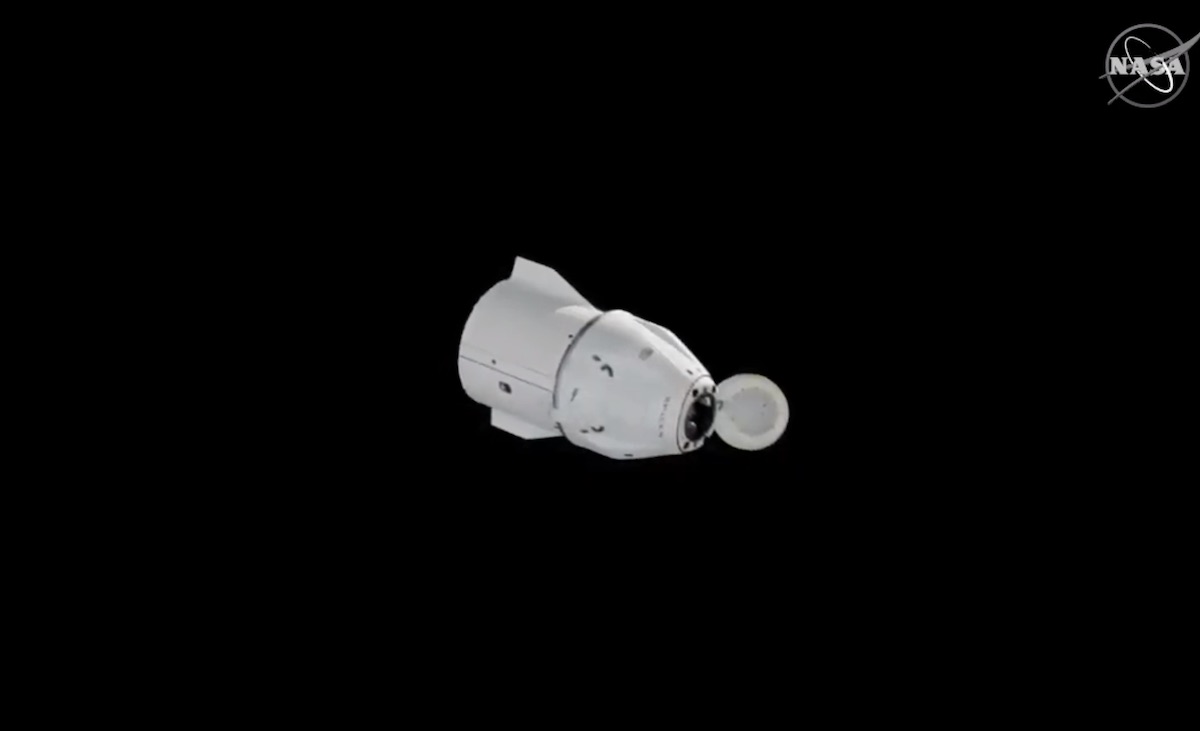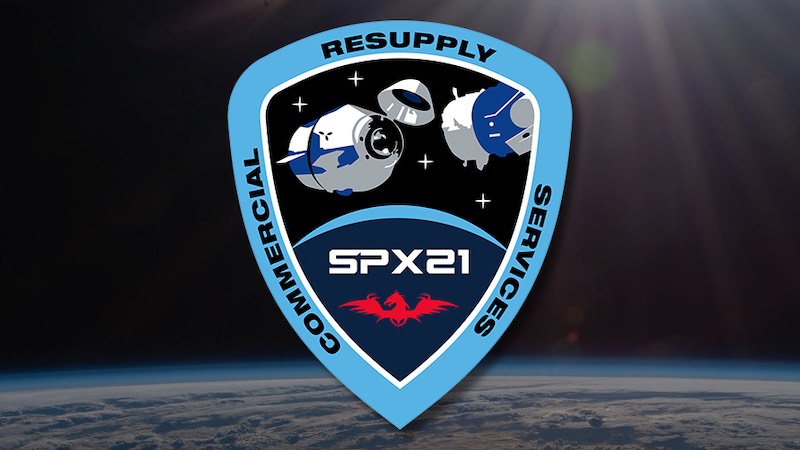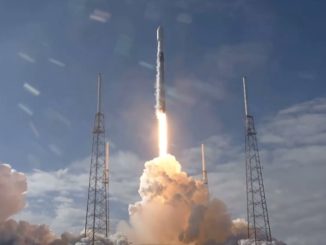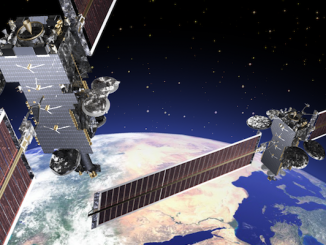
A SpaceX Cargo Dragon capsule parachuted to an on-target splashdown Wednesday night west of Tampa, returning more than two tons of experiment specimens from the International Space Station, including live rodents and a dozen bottles of space-aged French wine.
The commercial supply ship, flying on autopilot, dropped out of orbit and re-entered the atmosphere over the Gulf of Mexico Wednesday night. A sequence of parachutes deployed to slow the capsule’s descent to a relatively gentle speed for splashdown west of Tampa, where a SpaceX recovery vessel was on standby to pull the spacecraft from the sea.
The return wrapped up a 38-day mission for the Cargo Dragon, the first in a new design of SpaceX supply ships to service the International Space Station. The upgraded Cargo Dragon, or Dragon 2, replaces SpaceX’s fleet of first-generation Dragon cargo capsules, which flew for the final time in early 2020.
SpaceX confirmed the successful splashdown of the Cargo Dragon with a tweet. NASA and SpaceX did not provide any live coverage of the capsule’s return to Earth. A NASA WB-57 airborne imaging plane was flying over the recovery zone to capture imagery of the Cargo Dragon’s fiery re-entry and splashdown.
NASA issued a statement later Wednesday night confirming the capsule splashed down at 8:26 p.m. EST (0126 GMT).
The Cargo Dragon undocked from the space station at 9:05 a.m. EST (1405 GMT) Tuesday, one day later than planned. SpaceX and NASA managers delayed the homecoming due to poor weather in the primary recovery zone in the Atlantic Ocean northeast of Daytona Beach.
The Dragon returned to Earth with 4,414 pounds, or 2,002 kilograms, of cargo, according to a NASA spokesperson.
The new Cargo Dragon capsules are derived from SpaceX’s human-rated Crew Dragon spacecraft, which ferries astronauts to and from the space station. The upgraded Cargo Dragon capsule, like the Crew Dragon, is designed to splashdown off the coast of Florida, closer to SpaceX’s Dragon refurbishment facility at Cape Canaveral Space Force Station.
The closer proximity to Cape Canaveral allows SpaceX to return time-sensitive cargo to NASA’s Kennedy Space Center within as few as four to nine hours. Past Dragon cargo missions ended with splashdowns in the Pacific Ocean off the coast of Baja California, and it took days for space station research specimens to be transferred to NASA.
The “Go Navigator” recovery ship staffed by SpaceX technicians and engineers was expected to hoist the capsule onboard its deck after splashdown. The SpaceX team planned to unload time-critical science specimens and put them on a helicopter for a flight to the Kennedy Space Center overnight.
The helicopter will arrive at Kennedy’s Launch and Landing Facility, and the cargo will be transported to the nearby Space Station Processing Facility by truck, according to NASA.
Scientists there will receive the specimens to begin their analyses. After a quick look inside the SSPF at Kennedy, some of the materials will be shipped to research teams in California, Texas, Massachusetts, Japan, and other locations, NASA said.
The return of science specimens to Kennedy so quickly after their return to space harkens back to the space shuttle program, when missions brought come cargo directly to the Florida spaceport.
“I am excited to finally see science returning here again because we can get these time sensitive experiments into the lab faster than ever,” said Jennifer Wahlberg, Kennedy Space Center utilization project manager, in a statement. “Sending science up to space and then receiving it again on the runway was definitely something in the shuttle days that we really took pride in, and being able to rejoin that process is great.”
Experiments that came home aboard the Cargo Dragon included live mice that are part of the Rodent Research 23 investigation, which studies the function of arteries, veins, and lymphatic structures in the eye and changes in the retina before and after spaceflight, according to NASA.
Scientists are seeking insights about whether these changes affect eyesight. At least 40 percent of astronauts experience vision impairment on long-duration spaceflights, NASA says.
“Rodent Research-23 was designed to start studying rodent gravity readaptation responses as quickly as possible, making it an ideal candidate for this flight,” said Jennifer Buchli, deputy chief scientist for the International Space Station program at NASA’s Johnson Space Center in Houston.
Also aboard the Cargo Dragon: Twelve bottles of Bordeaux wine and 320 cuttings of grapevines.
The wine bottles spent more than a year on the space station after launching on a Northrop Grumman Cygnus supply ship in late 2019. Now back on Earth, some of the bottles will be opened for an exclusive tasting, while researchers will begin a more scientific analysis of some of the wine to gauge how it aged after 14 months in microgravity.
Scientists will look at the grapevine branches — called canes — to assess how they weathered the radiation and low-gravity environment in orbit. One of the goals of the privately-funded experiment, led by a Luxembourg startup named Space Cargo Unlimited, is to learn how the plants adapted to the stress of spaceflight.
Space Cargo Unlimited says grapes and wineries are susceptible to climate change, and results from the space station experiment could lead to lessons on how to grow grapes in harsher environments on Earth.
There was also a biomedical experiment led by researchers at Stanford University looking at how microgravity affects cardiovascular cells, and an experiment developed by Japanese scientists demonstrating the growth of 3D organ buds from human stem cells in space.

Other experiments returned to Earth included a payload led by researchers at Texas State University seeking to identify bacterial genes used during biofilm growth. The investigation examined whether these biofilms can corrode stainless steel, and evaluates the effectiveness of a silver-based disinfectant, to help designers of future long-duration space vehicles.
Materials from a fiber optic production technology demonstration also came home on the Cargo Dragon. Scientists and engineers will examine the fiber optic materials manufactured on the space station to see if they match predictions that fibers produced in space have “far superior qualities to those produced on Earth,” NASA says.
The upgraded Cargo Dragon spacecraft has more internal volume than SpaceX’s first-generation Dragon cargo ship, which conducted its last mission to the space station in 2020. It also has double the powered locker capability than previous Dragon capsules, and can support up to 12 such lockers for return to Earth, adding more capacity to bring back frozen and refrigerated samples.
“Using the previous Dragon spacecraft, it could take up to 48 hours from the time the capsule hits the water in the Pacific Ocean for it to be back in Long Beach, California. We then started distributing those samples about four to five hours after that,,” said Mary Walsh, Kennedy’s Research Integration Office utilization flight lead. “Now we are going to have early return science in hand and turn it over to researchers at just four to nine hours after splashdown.”
“That ability to get science back quickly is so important for space biology because we want to understand whether the effects that we’re trying to measure on orbit are due to the microgravity condition or due to the stress that a participant or a sample might see on landing,” said Kirt Costello, NASA’s chief space station program scientist. “So having those returned to the Cape really quickly and handed over to our scientists is a great new capability.”
Other changes introduced with the new Cargo Dragon spacecraft include the ability to automatically dock and undock at the station. The first-generation Dragon cargo freighters were grappled by the station’s robotic arm.
The Cargo Dragon’s pressurized compartment can be reused five times, according to SpaceX. The unpressurized trunk is disposable, and a new one will fly on each Cargo Dragon mission.
Before firing its braking rockets to fall out of orbit, the Cargo Dragon jettisoned its trunk section to remain in space before atmospheric drag causes it to naturally re-enter the atmosphere and burn up. The capsule also closed a nose cone to cover its docking port before plunging back into the atmosphere.
The Cargo Dragon launched Dec. 6 from NASA’s Kennedy Space Center in Florida on top of a Falcon 9 rocket. The capsule arrived at the space station the next day with an automated linkup with a new docking port on the zenith, or top-facing, side of the research outpost’s Harmony module.
It delivered to the space station numerous experiments and a commercial airlock for Nanoracks, a Houston-based company that plans to use the addition to deploy small satellites, dispose of trash, and host research investigations.
The Cargo Dragon mission was SpaceX’s 21st resupply flight to the space station since 2012 under a multibillion-dollar contract with NASA.
Email the author.
Follow Stephen Clark on Twitter: @StephenClark1.



